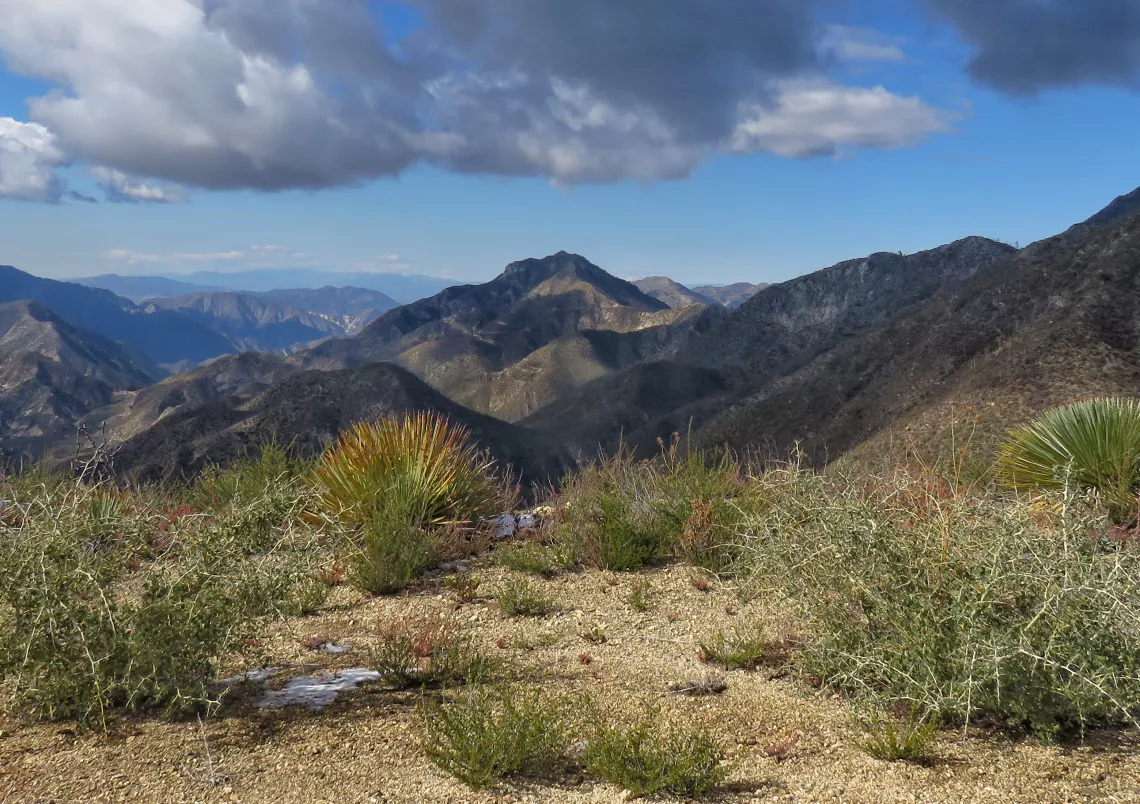October 21, 2019
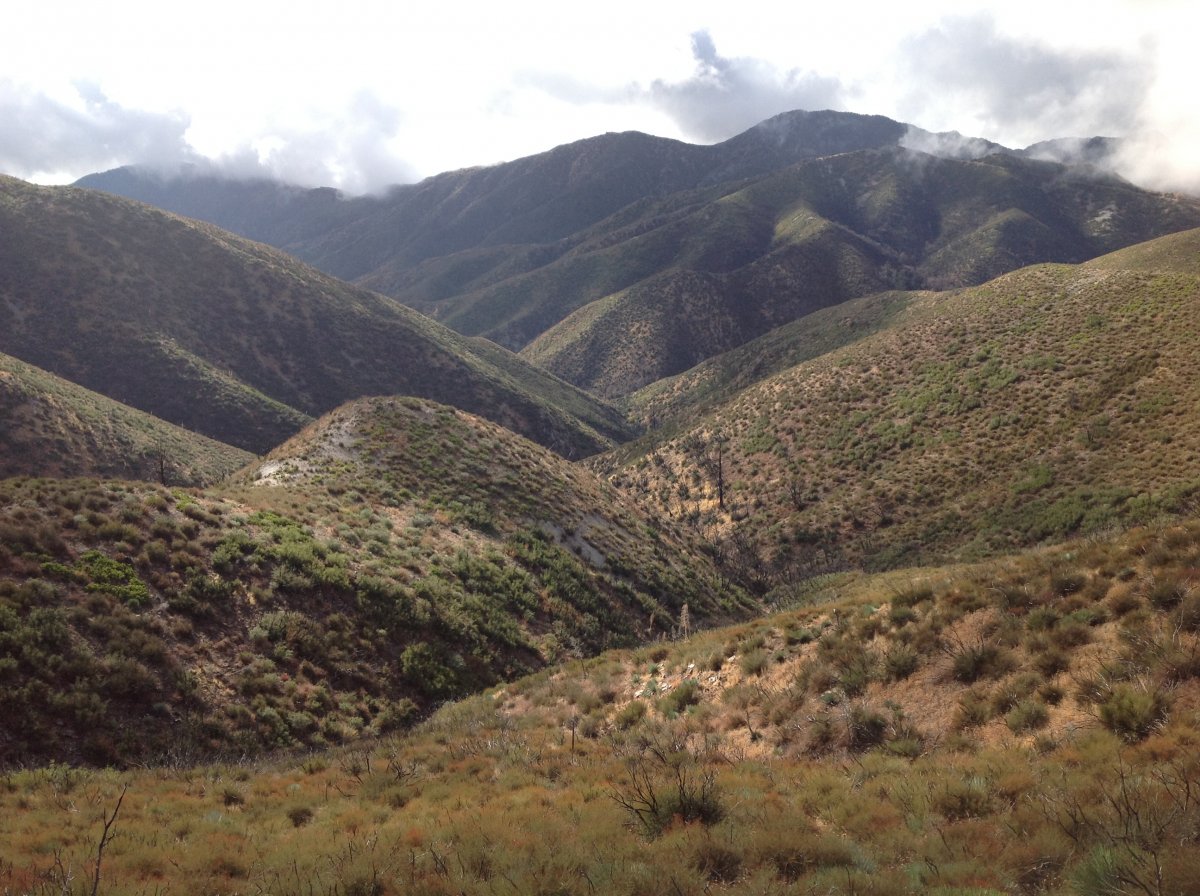
Chaparral rapidly recovering four years after the 2009 Station Fire. Photo of the Condor Peak Proposed Wilderness Area from Rocky Point with Upper Fox Creek in foreground and Condor Peak the high point on the distant ridgeline. Photo by John Monsen
Most of our mountains in Southern California are covered predominately by chaparral, a unique shrubland plant community that thrives in our hot, dry summers and mild, wet winters. Chaparral, so typical in Southern California, only occurs in Mediterranean climates like ours, its namesake locale, and a few other places in the world.
The Angeles National Forest, home to the San Gabriel Mountains, is three-quarters covered by chaparral. Typical plant species include ceanothus, chamise, manzanita and many others. The thick plant cover provided by chaparral protects the steep terrain of the San Gabriels from erosion. Chaparral makes for spectacular critter habitat.
Chaparral ecosystems are under threat from climate disruption, increasing fire frequency, and ever encroaching development.
Chaparral ecosystems are adapted to fire. Mature chaparral doesn’t need to burn but it will be reborn when it does. As anyone knows who has been near one a of our local wildfires or who has seen television coverage, chaparral naturally burns intensely. Chaparral fires can spread rapidly, especially when humidity is low, and the Santa Ana Winds are blowing. This has been going on for centuries, probably millennia. Post-fire recovery begins within weeks as 2009’s massive Station Fire showed with seeds attentive to heat germinating and burnt foliage sprouting green shoots.
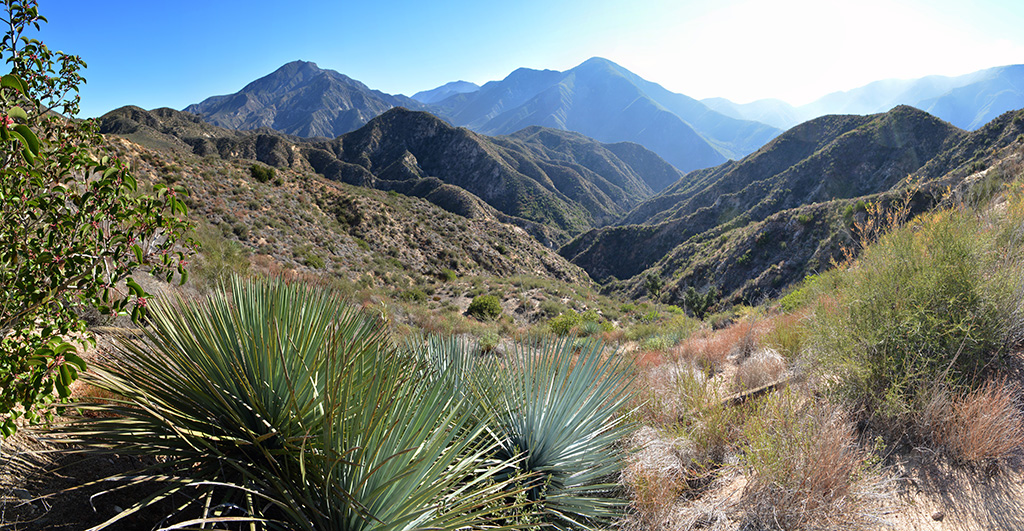
Chaparral covered vista on the Condor Peak Trail with Josephine and Strawberry Peaks in the distance. Photo by Carole Scurlock
However, if chaparral burns more often than every 20 years it may not regenerate, leaving areas open for conversion to grasslands that are even more flammable than chaparral. Fire frequency is increasing with humans starting fires more often – from fallen power transmission lines, sparks from tools and vehicles, campfires and arson. Our unique native plant life and the habitat it provides are under threat. And as more people live in and near chaparral, the more human-caused fires there will be. This puts hillside resindents and firefighters at risk, too.
Given the characteristics of how chaparral burns – quickly and intensely -- the obvious question is why human beings have built hundreds of thousands of non-fire-resistant homes and other structures adjacent to naturally flammable chaparral environments that periodically burn even without human provocation.
Developers and local governments have generally ignored, intentionally or not, the nature of chaparral ecosystems. More inappropriate development is coming unless we weigh in. Homes need to meet the highest of fire standards, not only establishing defensible space immediately around homes, but by having windows that do not let in thermal energy, minimal eves with no way for sparks to enter, fire-resistant decks, and fire-proofed roofing. We need better building codes and higher requirements for development at the interface of our national forests and private land holdings.
For more information on appreciating chaparral and living more safely with it, visit the following:
Angeles Chapter Forest Committee. Join to get period updates on programs, actions, and hikes.
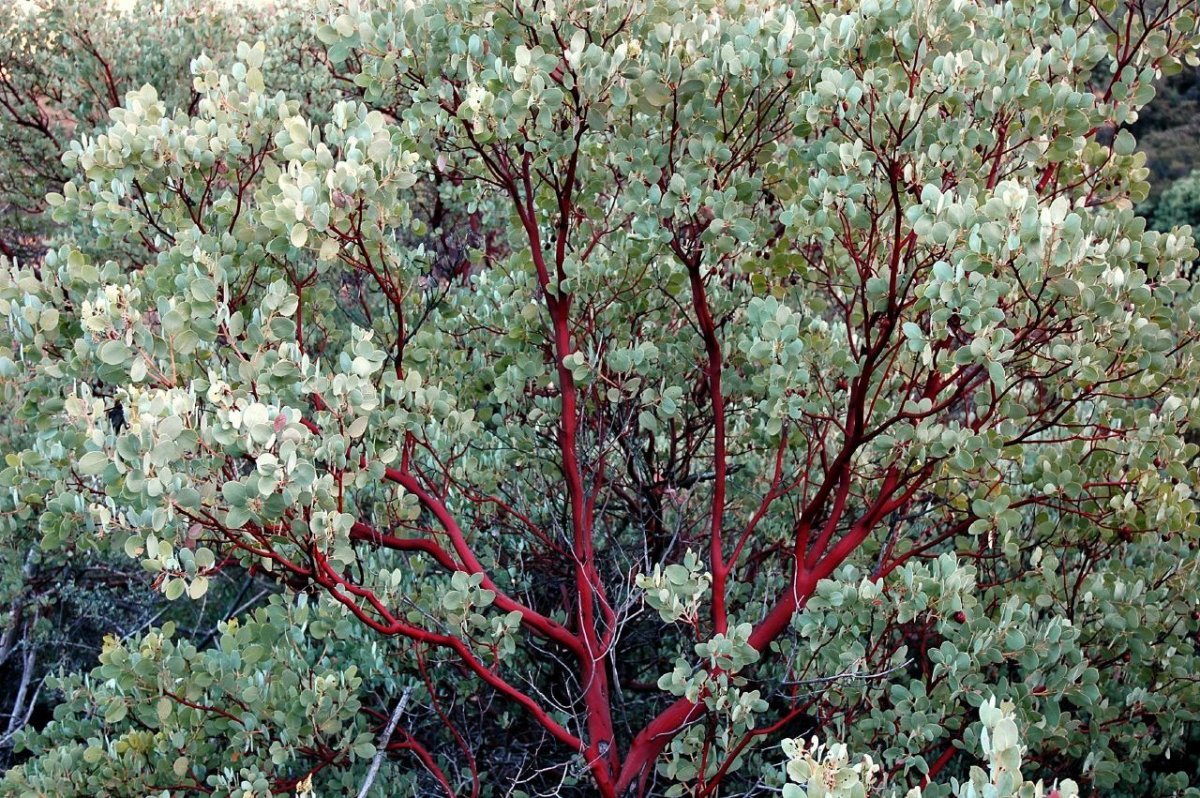
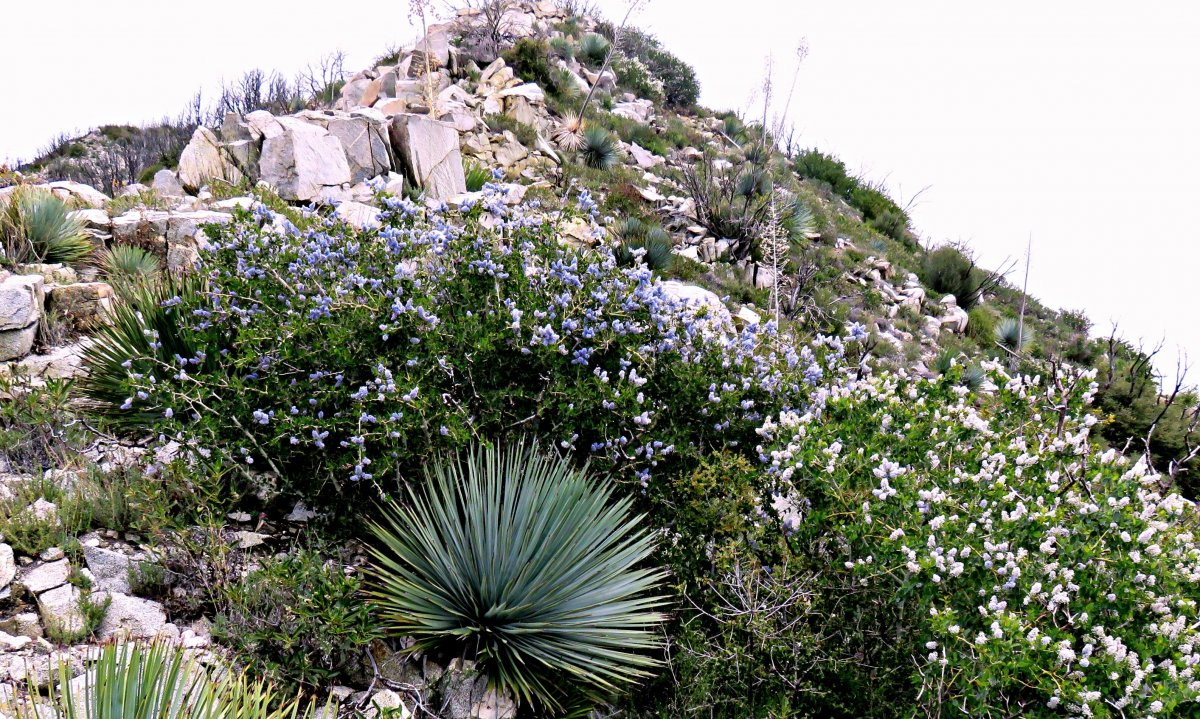
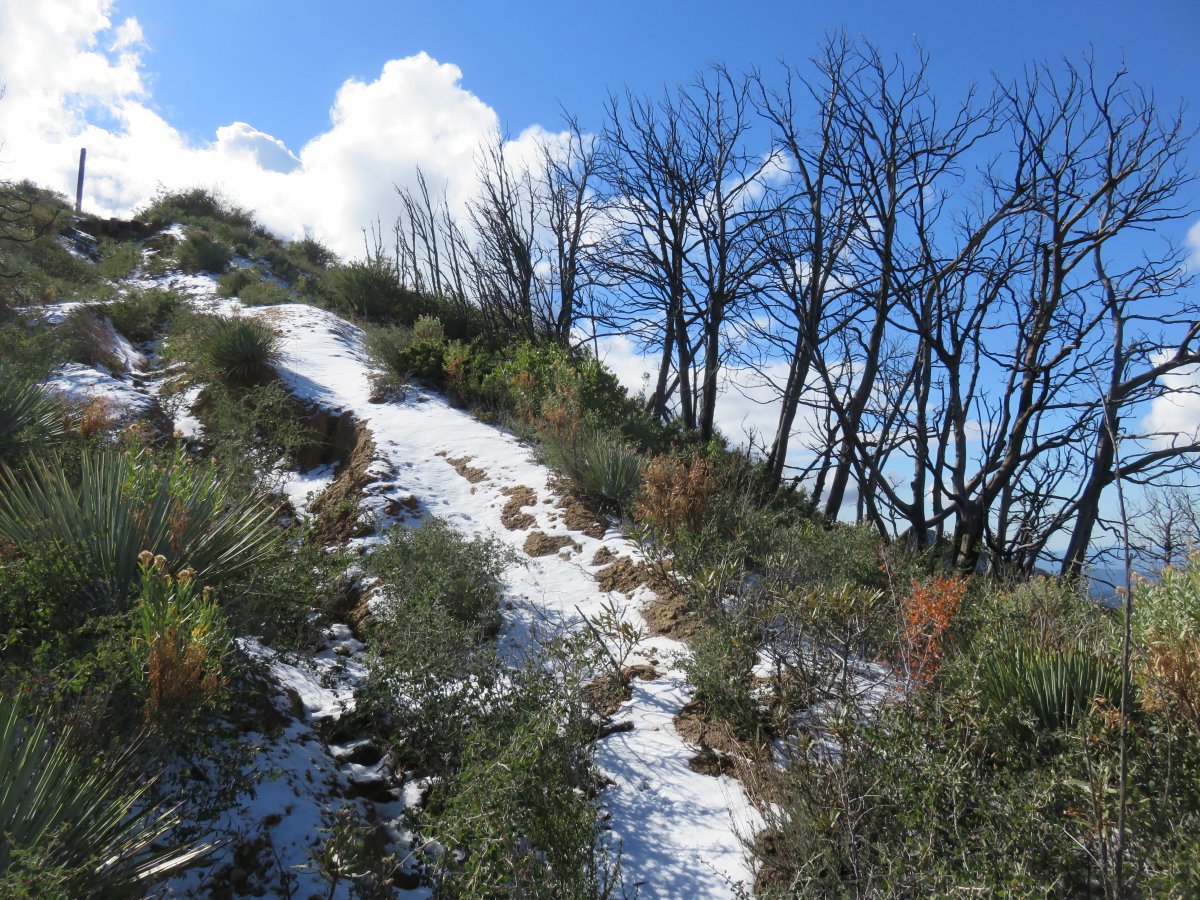
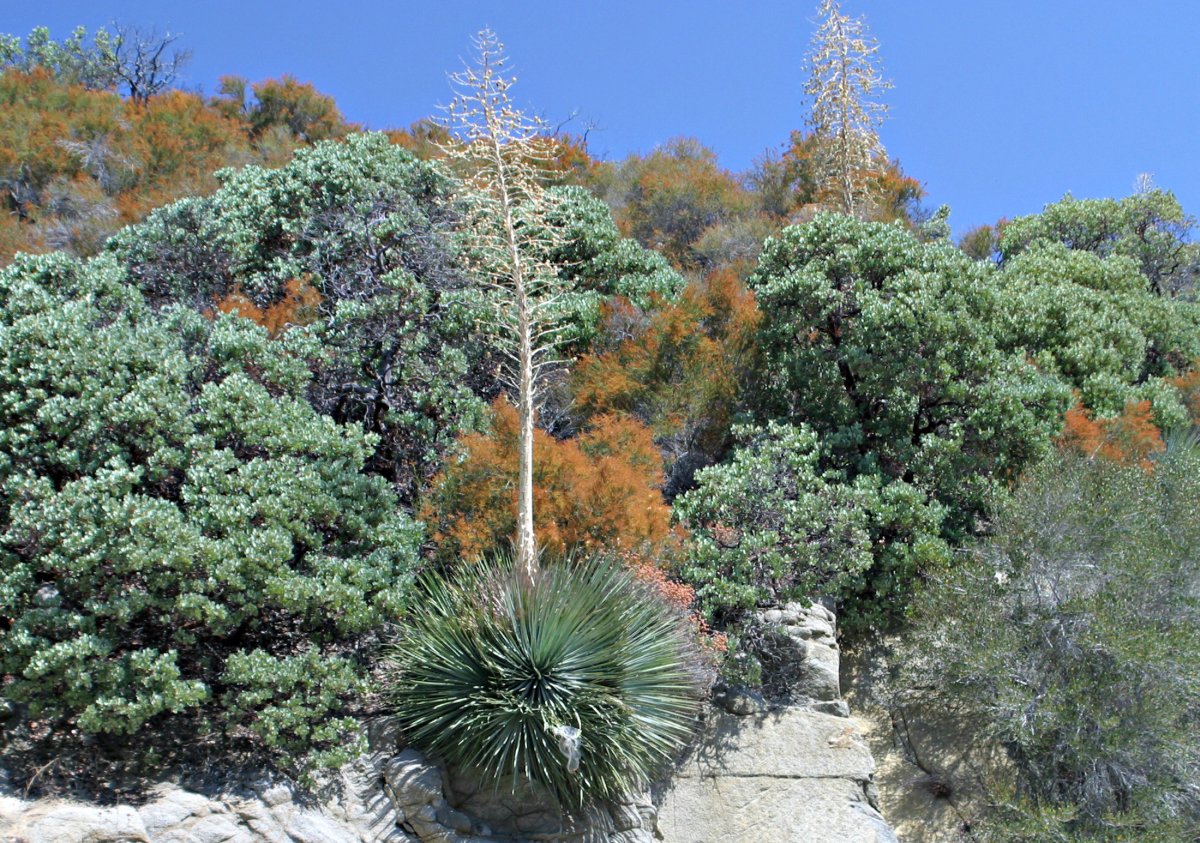
1) Manzanita, a handsome red-hued evergreen shrub, typically grows 6 to 12 feet high
2) Ceanothus, with varying coloration, center and right. Photo by John Monsen taken below Mt. Markham in the Angeles National Forest.
3) Chaparral recovering after the Station Fire of 2009 above Redbox, north of Angeles Crest Highway. Photo by John Monsen
4) Various chaparral species. Everything with the beautiful rust-brown color is chamise. Other plants from left to right are manzanita, yucca, more manzanita, and on the bottom right is mountain mahogany. Photo in Tujunga Canyon by Gabi McLean.
Header: Chaparral on flat along Strawberry Peak Trail with Josephine Peak in the distance. Photo by John Monsen
________________
John Monsen has been working to protect our public lands, mountains, and deserts for 20 years. He is co-chair of the Angeles Chapter Forest Committee.
